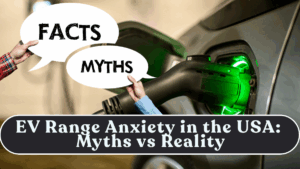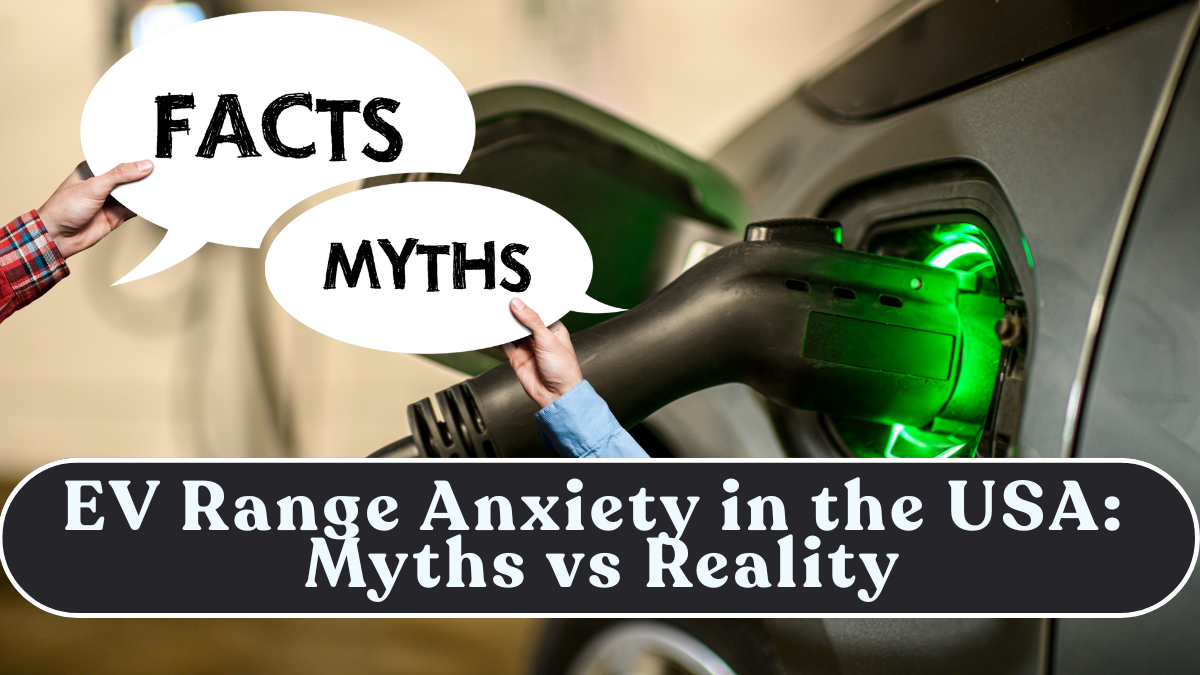Despite rapid progress in electric vehicle (EV) technology, one challenge still dominates discussions — range anxiety. Many American drivers hesitate to switch to EVs because they fear running out of charge mid-journey. However, with recent advancements in battery technology, charging infrastructure, and software optimization, the landscape in 2025 is drastically different from what it was even five years ago.

Understanding Range Anxiety
Range anxiety refers to the fear of an electric vehicle running out of battery power before reaching a charging station. In the USA, where long-distance driving is common, this concern initially slowed EV adoption.
However, data shows that most daily U.S. commutes are under 40 miles, while modern EVs offer 300–500 miles of range — well beyond everyday needs.
So, is range anxiety still a real issue, or just a leftover myth from the early days of EVs?
The Reality: Range Is No Longer the Problem
Leading EVs now offer ranges that rival, and sometimes surpass, gasoline cars.
| Model | Range (miles) | Fast Charging (0–80%) |
|---|---|---|
| Tesla Model S Long Range | 405 | 20–25 min |
| Lucid Air Grand Touring | 516 | 30 min |
| Ford F-150 Lightning | 350 | 35 min |
| Rivian R1T | 328 | 30–40 min |
| Hyundai IONIQ 6 | 361 | 18–20 min |
Manufacturers are optimizing aerodynamics, weight distribution, and regenerative braking, which together enhance real-world range. Even affordable EVs like the Chevy Equinox EV now achieve over 300 miles on a single charge.
The Real Challenge: Charging Infrastructure
The number of charging stations in the U.S. has crossed 170,000 as of 2025, but their distribution remains uneven. Urban and coastal areas like California, Texas, and Florida are well-covered, while rural and interstate routes still face “charging deserts.”
The Biden Administration’s National Electric Vehicle Infrastructure (NEVI) program is investing $7.5 billion to build 500,000 new chargers by 2030. States like Colorado, New York, and Washington have already begun highway electrification projects.
Additionally, Tesla’s Supercharger network opened to all EV brands in 2024, further improving long-distance travel confidence.
Technological Solutions Reducing Range Anxiety
-
Smarter Navigation:
EVs now integrate AI route planning that calculates battery use, terrain, and weather to guide drivers to optimal chargers. -
Faster Charging:
New 800V charging systems (used in Porsche Taycan and Hyundai IONIQ) cut charging times to under 20 minutes. -
Battery Management Systems (BMS):
Advanced software maintains battery health and efficiency, ensuring consistent range performance. -
Bidirectional Charging:
Vehicles like the Ford F-150 Lightning can power homes — turning range anxiety into range confidence.
Consumer Perception vs. Real Experience
Surveys show a significant gap between perception and experience:
-
60% of potential EV buyers worry about range.
-
Only 8% of EV owners report running low on charge in real-world use.
The issue now is awareness, not capability. Automakers and dealerships are focusing on test drives and education campaigns to correct outdated perceptions.
Role of Policy and Innovation
Government incentives are driving adoption:
-
$7,500 federal tax credits for new EV buyers (under the Inflation Reduction Act).
-
State-level incentives for home chargers and public infrastructure.
-
Private sector collaborations like ChargePoint, Electrify America, and BP Pulse expanding charger availability.
Battery innovation is also advancing quickly — solid-state batteries under testing could double range and halve charging times by 2026–27.
Environmental and Economic Impact
Reducing range anxiety boosts EV adoption, which has massive environmental benefits:
-
Every EV reduces 4.6 metric tons of CO₂ emissions per year compared to a gasoline car.
-
U.S. households could save $900 annually on fuel costs by switching to electric.
-
Expanding charging networks also creates tens of thousands of green jobs.
Conclusion
Range anxiety in the USA is increasingly a myth of the past. With EVs offering longer ranges, faster charging, and smarter route management, owning an electric car has never been more practical. As the country’s charging infrastructure scales and consumer education improves, the electric revolution is shifting from “can I make it there?” to “why didn’t I switch earlier?”
FAQs
What is the average range of EVs in the USA in 2025?
Most EVs now offer between 300–500 miles, easily covering daily commutes and long trips.
Are there enough charging stations in the USA?
Yes — with over 170,000 public chargers and a plan for 500,000 by 2030, coverage is expanding rapidly.
Which EVs have the best range?
Lucid Air, Tesla Model S, and Hyundai IONIQ 6 lead in long-range performance.
Can cold weather affect EV range?
Yes, extreme cold can reduce range by 10–20%, but modern heat pump systems help minimize loss.
Will range anxiety disappear completely?
By 2026–27, with solid-state batteries and national fast-charging networks, range anxiety will be virtually eliminated for U.S. drivers.
